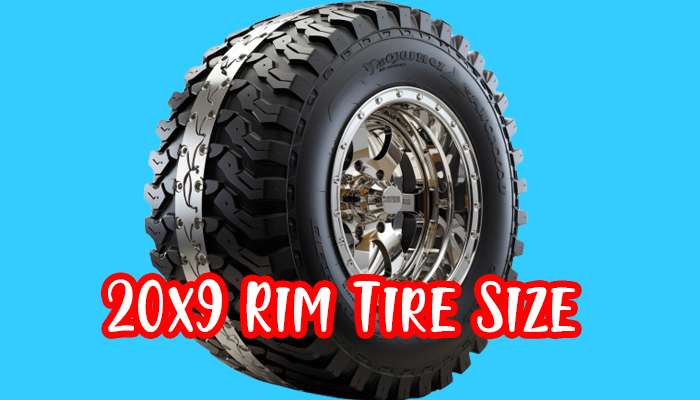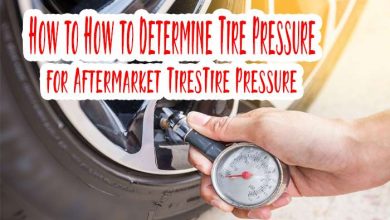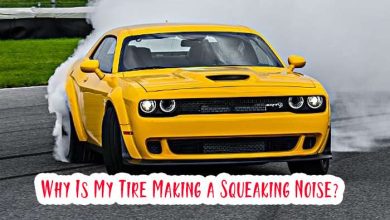Are 20 Inch Tires Good In The Snow? What do you need to know for safe driving?
If you live in an area with harsh winters, you know that having the right tires is essential for safe driving. But what about those who love the look of big, 20-inch rims? Are 20-inch tires good in the snow?
In this blog post, I’ll delve into the world of tires and answer a pressing question – are 20-inch tires good in the snow?
20-inch tires are not ideal for snow driving. They typically have less sidewall and a narrower tread pattern than smaller tires, which can reduce traction in slippery conditions.
The Basics of Tire Size
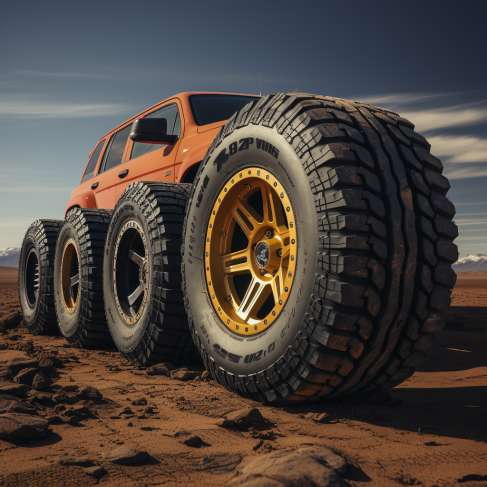
Tire size is a critical aspect to consider when it comes to handling various weather conditions. It’s not just about the diameter, width, and aspect ratio. The diameter of a tire is commonly represented by the number of inches – in this case, 20 inches. However, it’s essential to understand that tire size encompasses more than just this number.
1. Tire Diameter:
The 20 inches signifies the diameter of the wheel the tire is designed for. In snow driving, a larger wheel diameter may not be ideal.
2. Tire Width:
The width of a tire can also impact its performance in the snow. Wider tires are more prone to hydroplaning, making them less suitable for snowy conditions.
3. Aspect Ratio:
The aspect ratio is the height of the tire’s sidewall as a percentage of the tire’s width. Lower aspect ratios, which are common in larger wheel sizes like 20 inches, result in less sidewall. Driving on snowy roads can be a disadvantage as it provides less flexibility and cushioning.
Read Also: 45 vs 50 Tire Aspect Ratio
Winter Tires vs. All-Season Tires
Before diving deeper into whether 20-inch tires are good for snow, let’s differentiate between winter and all-season tires.

| Aspect | Winter Tires | All-Season Tires |
|---|---|---|
| Tread Design | # Deep, aggressive treads # Sipes for snow/ice grip | # Moderate tread depth # Fewer sipes for versatility |
| Winter Performance | # Excellent in snow and ice # Improved cold weather grip | # Good in light snow/ice # Limited ice/snow traction |
| Dry Road Handling | Less responsive, more noise | Better dry road handling |
| Wet Road Handling | Good wet traction | Good wet traction |
| Cold Temperatures | Remains flexible in cold temperatures | Stiffer rubber in cold temperatures can impact performance |
| Summer Use | Not suitable for hot summer conditions | Suitable for year-round use, less effective in snow |
| Cost | Typically more expensive | Generally less expensive |
| Tire Swapping | Requires seasonal changes | No need to swap tires |
| Longevity | Shorter lifespan due to softer rubber compound | Longer lifespan due to harder rubber compound |
| Ideal Use | Harsh winters, snowy and icy conditions | Mild winters, versatile year-round performance |
Are 20 Inch Tires Good in the Snow?
Are 20 Inch Tires Good in the Snow? 20-inch tires are not ideal for snow driving. They typically have a lower aspect ratio, meaning they have less sidewall. This makes them more susceptible to punctures and sidewall damage in snow and ice.
Additionally, 20-inch tires tend to have a narrower tread pattern than smaller tires, which can reduce traction in slippery conditions.
Choosing 18-inch or smaller tires for your winter driving needs is best if you live in an area with heavy snowfall. These tires will have more sidewall, a wider tread pattern, and a softer compound, improving traction in snow and ice.
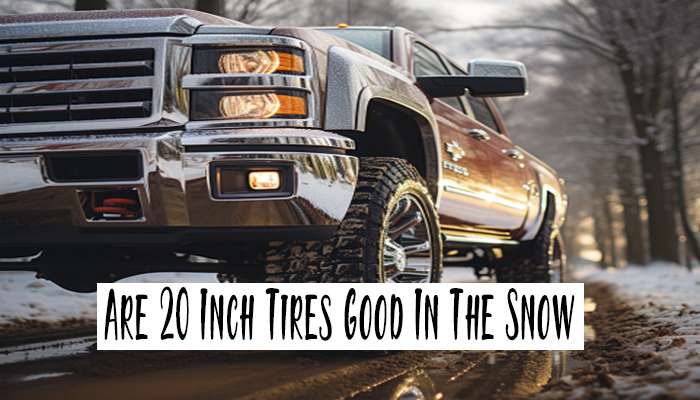
However, if you must use 20-inch tires in the snow, there are a few things you can do to improve traction:
- Make sure your tires are properly inflated. Underinflated tires will have less tread contact with the road, which can reduce traction.
- Choose winter tires that are designed for your vehicle and driving conditions. There are a number of winter tires available for 20-inch wheels.
- Drive slowly and carefully in snow and ice. Avoid sudden acceleration, braking, and turns.
If you are concerned about your safety in the snow, it is best to consult a tire professional to get their recommendations for the best tires for your vehicle and driving conditions.
Benefits of Smaller Wheels in Snow
If you live in an area with heavy snowfall, you might want to consider downsizing your wheels for winter. Here are some benefits of using smaller wheels in snowy conditions:
1. Improved Traction:
Smaller wheels often come with taller sidewalls, which provide more flexibility. This means better traction on slippery surfaces.

2. Easier Installation:
Winter tires for smaller wheels are more readily available and easier to find.
3. Better Comfort:
Smaller wheels often result in a smoother and more comfortable ride, especially on rough winter roads.
Winter Tire Maintenance
Regardless of the wheel size you choose for your winter tires, proper maintenance is crucial for their effectiveness. Here are some maintenance tips:

1. Check Tire Pressure:
Maintaining the correct tire pressure is essential. For 20-inch snow tires, it’s important to adhere to the manufacturer’s recommendations.
2. Regularly Inspect Tread Depth:
Ensure your winter tires’ tread depth is sufficient for snowy conditions. In some regions, a minimum tread depth is mandated by law.
Related Post:
Are BFGoodrich Tires Good?
Are Atlas Tires Good?
3. Rotate Your Tires:
Regularly rotating your tires ensures even wear, extending their lifespan and maintaining optimal performance.
Frequently Asked Questions (FAQs)
Can I use 20-inch tires in snowy regions?
Using 20-inch tires in snowy regions is not ideal. Smaller wheels with taller sidewalls are better suited for snow driving as they provide improved traction and flexibility.
Do I need to change my wheels when installing winter tires?
Yes, it’s advisable to consider downsizing your wheels when installing winter tires, especially if you live in an area with heavy snowfall. Smaller wheels provide better traction and a smoother ride on snowy roads.
What is the ideal tire pressure for 20-inch snow tires?
The ideal tire pressure for 20-inch snow tires can vary depending on the specific tire and vehicle. Always refer to the manufacturer’s recommendations for the correct tire pressure.
What size tires are best for snow?
Tire size for snow depends on the region and conditions. In general, smaller wheels with taller sidewalls perform better in snowy conditions.
Do bigger tires do better in the snow?
No, bigger tires do not necessarily perform better in snow. Larger wheels with wider tires can have less traction and flexibility, making them less suitable for snowy conditions.
Conclusion
If you’re planning to drive in snowy conditions, it’s best to avoid 20-inch tires. These larger wheels with lower aspect ratios are not optimized for snow driving.
Smaller wheels with taller sidewalls offer better traction and control in winter weather. The right tire choice can make all the difference in ensuring your safety on snow-covered roads.
